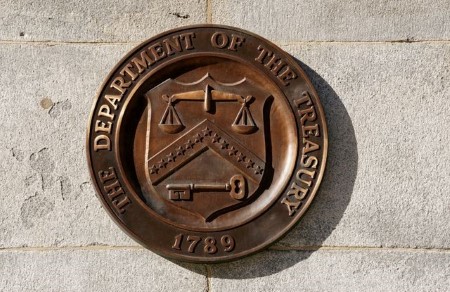




Quarterly Economic Growth Release: More BSP cuts to come
 DOWNLOAD
DOWNLOAD

Monthly Economic Update: Fed catches up
 DOWNLOAD
DOWNLOAD

Inflation Update: Steady and mellow
 DOWNLOAD
DOWNLOAD


US yields continue slide after worsening labor data

US Treasury yields on Thursday were lower for the fourth straight session as markets absorbed economic data pointing to a worsening labor market and a moderate uptick in wholesale inflation.
A USD 22 billion auction of 30-year bonds also revealed strong demand, helping allay concerns that foreign investors could shift away from the US market over the expanding federal deficit. A Wednesday auction of 10-year Treasuries likewise pointed to healthy uptake from buyers.
According to the Labor Department, total insured unemployment, or all people receiving benefits, overshot expectations to rise to 1.956 million workers, the highest level in nearly four years.
Meanwhile, the annual reading of the Producer Price Index ticked one tenth higher to 2.6%, in line with expectations, even though a closely watched “core” reading, which excludes volatile food and fuel categories, was cooler than the prior month’s print.
Lou Brien, market strategist at DRW Trading, said investors likely were reacting to labor market weakness and believed consumer price increases from President Donald Trump’s trade wars were in the pipeline even if they had yet to materialize.
“There are many details in the labor market that have shown weakness for a long time,” he said. “I think the move higher in the continuing claims and the weekly claims is starting to confirm some of that weakness.”
“We’re still anticipating there’s gonna be some kind of a jump in prices. We keep thinking that month after month and nothing happens, but I don’t think that thought has left the market.”
Chinese authorities on Thursday affirmed a trade deal reached this week with Washington, though specifics remain unclear.
In Thursday’s 30-year auction, bonds sold at a high yield of 4.844%, more than a basis point below where the market put the yield at the close of bidding. Overall demand was 2.43 times the amount of debt on offer, in line with its recent average.
“It was a very, very solid auction,” said Jan Nevruzi, US rates strategist at TD Securities in New York. “The end user demand was pretty high, above recent averages, and it stopped through after a pretty substantial rally on the day.”
The yield on the benchmark US 10-year Treasury note was last down 5.3 basis points to 4.361%. The yield on the 30-year bond fell 6.3 basis points to 4.846%.
A closely watched part of the US Treasury yield curve measuring the gap between yields on two- and 10-year Treasury notes, seen as an indicator of economic expectations, was at a positive 44.7 basis points.
The two-year US Treasury yield, which typically moves in step with interest rate expectations, fell 3.3 basis points to 3.912%.
The breakeven rate on five-year US Treasury Inflation-Protected Securities (TIPS) was last at 2.295% after closing at 2.313% on June 11.
The 10-year TIPS breakeven rate was last at 2.274%, indicating the market sees inflation averaging about 2.3% a year for the next decade.
The US dollar 5 years forward inflation-linked swap, seen by some as a better gauge of inflation expectations due to possible distortions caused by the Fed’s quantitative easing, was last at 2.433%.
(Reporting by Douglas Gillison, Editing by Nick Zieminski)
This article originally appeared on reuters.com





 By Reuters
By Reuters